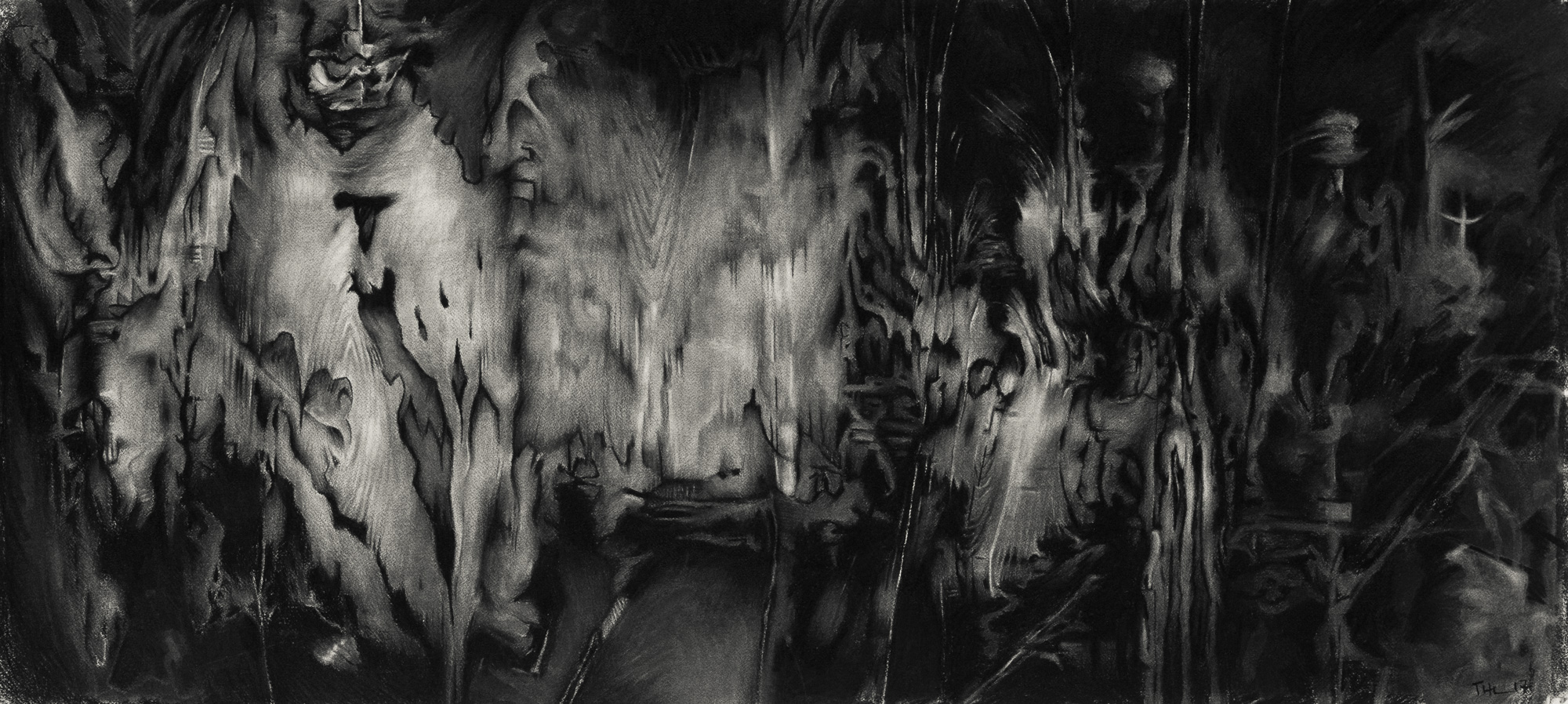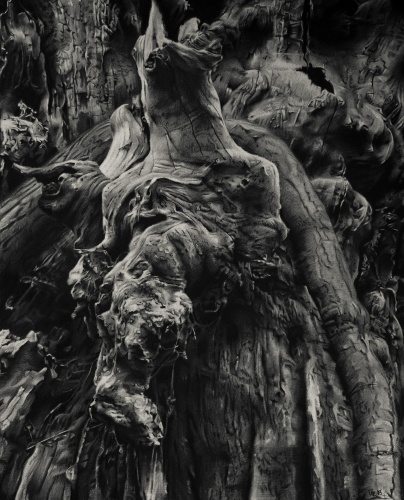For his latest body of work Thomas Lumley applies traditional drawing and portraiture techniques to explore the very essence of trees – exposing one in seemingly microscopic detail by using the cremated remains of another.
The resulting charcoal abstractions are profoundly simple and gently poetic and invite the viewer to explore ostensibly familiar surfaces and textures and to discover the topography of an illusive universe.
Working with a humble and ancient material, Lumley takes a snapshot of time and captures the mystery epitomised in his arboreal subjects – Evidence That Something Happpened.

Ash is fundamental. It is the ultimate rendering of anything, the sublimate of all things. Ashes blew in the wind after the sacking of Rome; the library of Alexandra was reduced to a grey powder. We burn joyfully in the wind; a handful of carbon is all that will remain of most of us in the long run. The poetry of ash is unignorable.
Burned wood is smeared on the faces of the Saddhus in the feast of Kumbh Mela; it mixes with the Chrism on the eponymous Wednesday marking the start of Lent.They are cast on the water in the Hebrew Red Heifer; they are the embers glowing in the hearth at dawn. The carbon which copied the imprint of ancient animals in the fossil record.
A single piece of charcoal is created by burning willow twigs in airless conditions. And so there is something gently poetic in the rendering of a tree in charcoal. It has the quality of a rite. The tree which gave it’s skeleton to this endeavour is not reconstituted but becomes the medium. It is simultaneously simple and profound, the kind of clear act which reflects an enigma.
Lumley’s drawings are studies in the truest sense of the word. They are an investigation and survey of the topography of a miniature world. As surfaces they are simultaneously delicate and muscular. But there is another aspect to this exercise. They are also a meditation; a spiritual investigation of the geist of the tree, created by observing one and using the cremated remains of another. This is not an intellectual exercise. It is instinctive. The abstract and the actual are united by the work of the human hand.
Charcoal is a humble material. It has none of the grand historic associations of oil paint or bronze; it is void of the modernist cachet of acrylic or aluminium, every great rendering in history was almost certainly born out of its controlled disintegration. Fundamentally it’s also an ancient material. The oldest discovered charcoal cave drawings, created from the stumps of burned firewood, date back almost four hundred centuries. Across this ocean of time discussing the oeuvre of artists from our epoch seems almost superfluous. But as Lumley reaches to the paper and makes his unique contribution to this continuum these moments are and continue to be.
Following from his previous exhibition ‘Between the Essence and the Descent’ Lumley departs from interiors and landscapes and moves to phantasmagoric charcoal abstractions inspired by wood.
Ten years ago in Rasa, Ticino, a mountain-top town in Switzerland, Lumley’s attention was drawn to the wooden beams as he lay in bed looking at the ceiling. Some years later in Richmond Park, the patterns in the ancient oaks caught his eye.
Through his skilled works in charcoal, Lumley opens the doors to these organic cathedrals, drawing out the mysteries so that we may see, with our own eyes, what he and the tree have seen.
Known predominantly for his figurative art, Thomas Lumley is winner of the Prince of Wales Drawing School Prize at the Royal Society of Portrait Painters 2006.
Evidence That Something Happened exhibition is on at The Muse gallery from 22nd November -8th December with a private viewing on 22nd November from 6.30 pm to 9 pm.
The Muse is an artist led gallery and studio that supports emerging and established artists with opportunities to exhibit work and to connect with the clientele and industry professionals a commercial gallery attracts.





